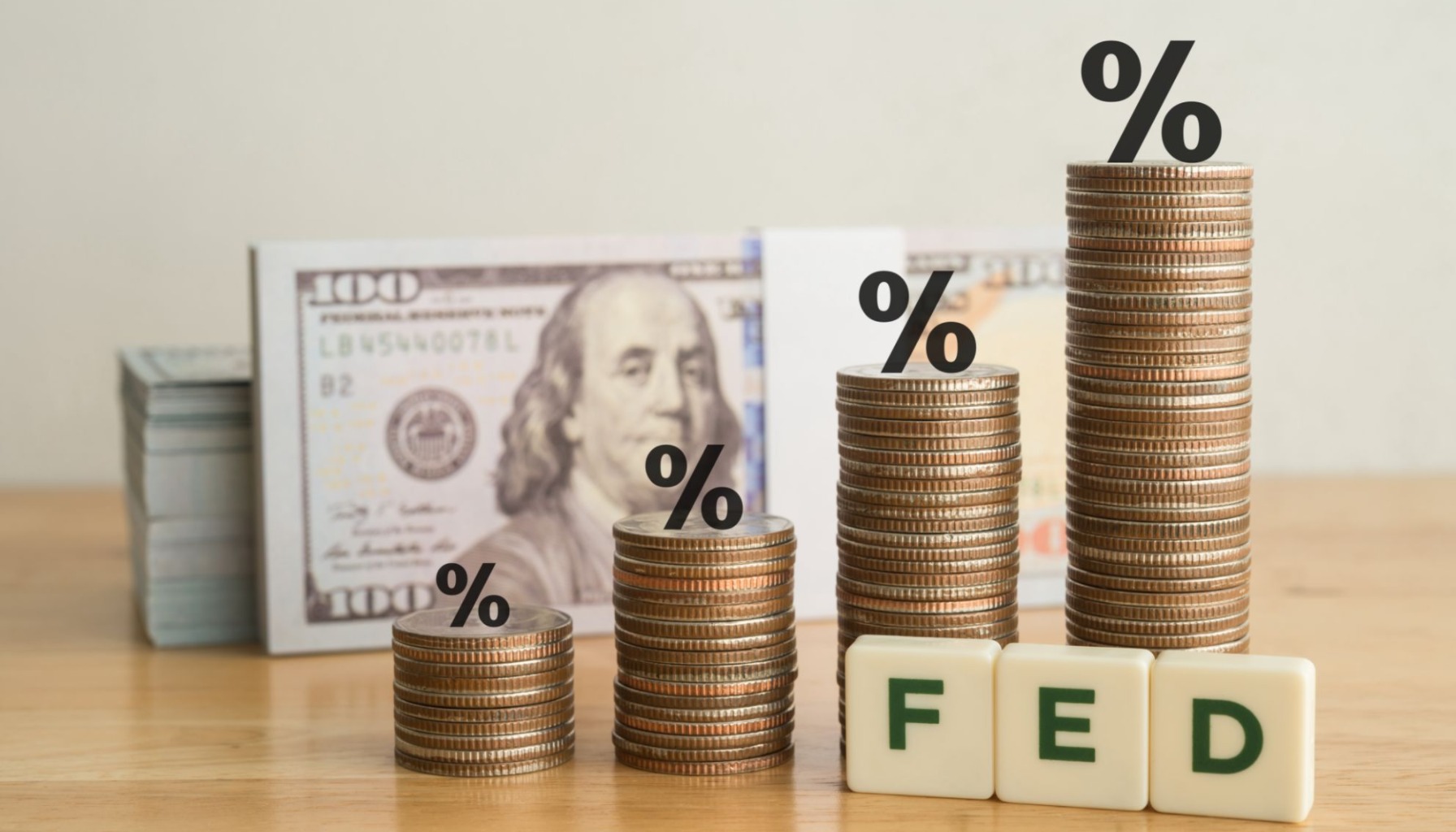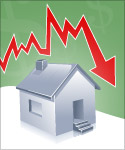Here's the bottom line right away: By the time the ball drops on New Year's Eve 2025, it looks very likely the Federal Reserve will have nudged interest rates down twice, each time by a quarter of a percentage point. This would bring the target federal funds rate to a range of 3.50%-3.75%. While this seems pretty set in stone, there are still some whispers of caution because the economy can be a tricky thing to predict.
Fed Interest Rate Forecast for Q4 2025: October to December
As I see it, the Federal Reserve's interest rate decisions are like the thermostat for our economy. They can make things warmer by cutting rates, encouraging more spending and borrowing, or cooler by raising them, to rein in prices. Right now, looking at October to December 2025, the economic compass seems to be pointing towards a gentle cooling. The Fed has already taken the first step, and the signals suggest they'll continue on this path, albeit carefully.
What’s Happening Right Now: The Current Rate Setting
Let's set the scene for where we are. As of October 10, 2025, the federal funds rate is sitting in a target range of 4.00%-4.25%. This isn't where it was for long, though. Just recently, at their September 16-17 meeting, the Fed decided to lower rates by 25 basis points. This was a big deal because it was the first rate cut in nine months.
Why the sudden shift? Well, the job market has been showing signs of cooling down, which is something the Fed watches closely. At the same time, inflation – the general rise in prices we all feel – has been inching closer to their target of 2%. When you put those two things together, it makes sense for the Fed to take a step back and make borrowing a bit cheaper. Fed Chair Jerome Powell himself described this move as a “risk management cut,” meaning they're trying to be proactive and stop the economy from slowing down too much. It’s like putting on a slightly warmer coat before a cold snap, rather than waiting until you're already shivering.
Looking Ahead: The Key Meetings of Q4 2025
The Federal Reserve doesn't just meet whenever they feel like it. They have a set schedule, and the meetings that matter most for the next few months are:
- October 28-29, 2025: This is the immediate target. Based on how the economy is performing, especially job numbers and price trends, this meeting is crucial.
- December 9-10, 2025: This meeting wraps up the year. By then, they'll have a good look at the full year's economic data and can make a more informed decision about any further moves.
These are the final two chances for the Fed to adjust interest rates in 2025, and they're both circled in red on the calendar for anyone watching the economy.
The Fed's Own Crystal Ball: Projections and Hopes
The Fed doesn't just make decisions on the fly. They have a group of economists who put together forecasts called the Summary of Economic Projections (SEP). The latest one, from September 2025, gives us a pretty clear picture.
Their median forecast – that’s sort of the middle-of-the-road prediction among all their economists – suggests the federal funds rate will be around 3.6% by the end of 2025. To get to that number from where we are now, it implies they’ll make two more 25-basis-point cuts. Pretty neat, huh?
Think of it like this:
| Year | Median Fed Funds Rate Projection (%) |
|---|---|
| 2025 | 3.6 |
| 2026 | 3.4 |
| 2027 | 3.1 |
What’s interesting is that even within the Fed, there isn’t a single viewpoint. Some economists are more optimistic about the economy and think rates could stay a bit higher. Others see things differently and believe more cuts might be needed. The “dot plot” in the SEP shows this spread – it's like a scatter of dots where each dot represents a Fed official's personal interest rate forecast. For 2025, most of these dots cluster around that 3.6% mark, but there are a few outliers, showing the range of opinions.
What the Markets Believe: The Street's Take
It’s not just the Fed calling the shots; the financial markets are constantly trying to guess what the Fed will do, and their bets often shape what actually happens. Tools like the CME FedWatch Tool are super helpful here. They look at how people are trading futures contracts related to the federal funds rate.
As I'm writing this, the market is almost certain (like, over 97% probability!) that the Fed will cut rates by 25 basis points at the October meeting. This would bring the target range down to 3.75%-4.00%. For the December meeting, the market is giving about a 71%-74.5% chance of another cut. If both these happen, we'd indeed land in that 3.50%-3.75% range by the end of the year.
So, you have the Fed’s official forecast and the market’s strong anticipation both pointing to similar outcomes. This means that while there's always a small chance of surprise, the path seems pretty well-trodden for these rate reductions.
What's Pushing the Fed's Decisions? The Economic Engine Room
Several things are influencing these decisions, and they're all interconnected:
- Inflation: This has been the big monster the Fed has been trying to tame. Thankfully, it’s been coming down. The latest projections show inflation (measured by the Personal Consumption Expenditures, or PCE, price index) around 3.0% for 2025, with the “core” PCE (which strips out volatile food and energy prices) at 3.1%. This is much closer to the Fed's 2% goal than it has been for a while.
- Jobs, Jobs, Jobs: The unemployment rate is currently hovering around 4.5%. This is still considered healthy, but if job growth continues to slow, it could give the Fed more reason to cut rates to keep people employed. That “cooling labor market” I mentioned earlier is a key driver.
- Economic Growth (GDP): The economy is expected to grow at a modest pace, around 1.6% for 2025. This isn’t a booming economy, but it's also not shrinking, which is exactly the kind of steady, sustainable growth the Fed aims for.
Now, it's not all smooth sailing. Fed officials like Michael Barr have been quite vocal about being cautious. They’re worried about economic uncertainties, especially when it comes to the jobs market and inflation data. This means they'll be watching every little bit of data with a fine-tooth comb. Things like geopolitical events or unexpected shifts in government spending could also throw a wrench into the works.
How This Affects You and Me: The Real-World Impact
When the Fed adjusts interest rates, it’s not just an abstract financial concept. It trickles down to our wallets:
- Mortgages and Loans: Lower interest rates generally mean cheaper borrowing. So, while mortgage rates might not plummet overnight, a 50-basis-point cut over these next few months could indeed make mortgages more affordable, potentially saving homeowners a bit of money or making it easier for new buyers to enter the market.
- Stock Market: Generally, lower interest rates are good news for stocks. When borrowing is cheaper, companies can invest more, and investors might put their money into stocks instead of safer, lower-yield bonds. We’ve seen markets react positively to past rate cuts.
- Savings: On the flip side, if you have money in savings accounts or certificates of deposit (CDs), lower interest rates mean you'll earn less on your savings.
- Consumer Spending: As borrowing becomes cheaper and people feel more confident with a stable job market, they might be more inclined to spend on big-ticket items like cars or even just daily goods and services.
My Two Cents: Putting it All Together
From my perspective, looking at all the data and hearing what the Fed officials are saying, the most likely scenario is indeed a measured easing of monetary policy. The focus on a “risk management cut” in September and the strong market expectations for October and December cuts strongly suggest that the Fed sees more benefit in gently supporting the economy than in risking a slowdown by keeping rates too high.
The key word here is measured. They aren't looking to shock the system with big, rapid cuts. They want to guide the economy toward a soft landing – one where inflation is controlled, but growth doesn't stall out. The fact that inflation is moderating and unemployment is stable around that 4.5% mark gives them room to maneuver.
However, I also appreciate the caution. We've seen how quickly things can change. A sudden spike in oil prices, a fresh geopolitical crisis, or even unexpected strength in the jobs market could force the Fed to rethink its plans. That’s why they’re watching so closely.
Ultimately, the Fed is trying to strike a delicate balance. They need to bring inflation down to their 2% target without causing a recession. The actions they are expected to take in late 2025 appear to be a calculated step towards that goal, aiming to support continued growth while keeping price stability in sight. It’s a complex dance, and I’ll be watching every step.
“Build Wealth Through Turnkey Real Estate”
The Federal Reserve’s decisions on interest rates impact everything—from your mortgage payments to your savings yields. As of October 2025, the Fed’s target range stands at 4.00%–4.25% following a recent 25 basis point cut, with the effective rate hovering near 4.09%.
Market analysts now anticipate additional rate cuts over the coming months—potentially lowering the rate to around 3.50%–3.75% by the end of 2025. This shift could open new opportunities for homebuyers and real estate investors looking to secure better financing terms.
🔥 Lower Rates Mean Smarter Investment Opportunities! 🔥
Talk to a Norada investment counselor today (No Obligation):
(800) 611-3060
Want to Know More?
Explore these related articles for even more insights:
- Fed Interest Rate Forecast for the Next 12 Months
- Federal Reserve Cuts Interest Rate by 0.25%: Two More Cuts Expected in 2025
- Fed Projects Two Interest Rate Cuts Later in 2025
- Interest Rate Predictions for the Next 3 Years: 2025, 2026, 2027
- When is Fed's Next Meeting on Interest Rate Decision in 2025?
- Interest Rate Predictions for the Next 10 Years: 2025-2035
- Interest Rate Predictions for 2025 by JP Morgan Strategists
- Interest Rate Predictions for Next 2 Years: Expert Forecast
- Fed Funds Rate Forecast 2025-2026: What to Expect?
- Interest Rate Predictions for 2025 and 2026 by NAR Chief
- Market Reactions: How Investors Should Prepare for Interest Rate Cut
- Impact of Interest Rate Cut on Mortgages, Car Loans, and Your Wallet




